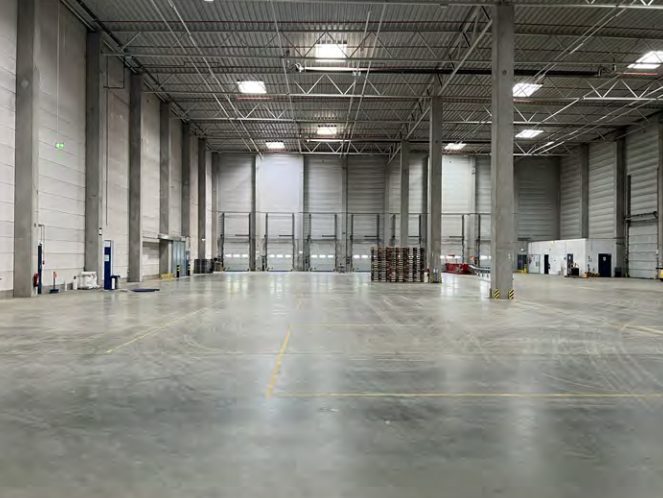Logistics real estate has witnessed an impressive shift due to various new demand impulses over time, including the emergence of e-commerce, its vital role during the pandemic, and the impact of recent supply chain disruptions. Signs of a new set of demand impulses for our sector are on the horizon. Therefore, it’s crucial to review their potential impact.
This change applies not only to leasing volumes but also to emerging sectors and new market entrants. This article reviews potential new demand impulses for the logistic sector in Europe, all occurring during a period of increased geopolitical tension, continued technological innovations, and a challenged macroeconomic environment.

New leasing has normalized after a few exceptional years with unprecedented demand levels. Based on Q1 2024 pan-European leasing trends, take-up is now moving back to pre-pandemic levels, which can still be considered resilient in many markets. This trend is expected to continue as almost 60% of occupiers are planning to expand within the next 3 years.
A key reason for this resilience is the importance of structural demand drivers. As covered in our “Why Invest in Europe” article, the growth of occupied stock almost doubled while economic growth was ~14% during the period 2013-2023 across nine countries analysed. This is an important characteristic, especially when considering that the European market functions amidst heightened geopolitical tensions and challenging economic conditions. In Germany, many sentiment indicators are still in negative territory, but they have shown a slight improvement in recent months, as evidenced by the Ifo Institute’s Business Climate Index. Even the automotive sub-index has recovered from its low level over the last 12 months.
Just as economies, consumer habits, and technologies evolve, so do sources of demand. GARBE research has identified three different types of emerging demand categories.
The first one is ‘expanding and diversifying e-commerce’. After a pause in 2022 and 2023, e-commerce penetration and online sales are forecast to rise across Europe over the next 5 years . All e-commerce sectors are projected to experience growth, but market shares are shifting. The sectors expected to make the greatest gains in market share are the emerging sectors of Food, Furniture and Fashion. Electronics and Media were among the first sectors to move online, and their market share is expected to plateau.
E-Food and Furniture are expected to drive logistic real estate demand closer to end-consumers, as products are time-sensitive (fresh products) for groceries or bulky (furniture). Emerging demand for logistic real estate from the fashion sector is expected to be dominated by fast fashion retailers, which are rapidly gaining market momentum. International retailers like SHEIN and Temu are expanding aggressively and increasingly require logistic space as they shift away from their reliance on air freight. This is plausible insofar as these retailers with their enormous quantities shipped have become some of the world’s largest air freight forwarders in recent years. SHEIN has already opened a distribution centre in Wrocław/Poland and is planning to open another facility in Frankfurt/Germany.

At the same time, the peak of quick commerce seems to have passed, as competition is too intense and the profitability of business models is challenging for many. Recently, Getir and Gorillas announced their intention to exit the German market, positioning Flink as Germany’s market leader.
2023 was a record year in terms of total volume of foreign direct investments (FDI), manufacturing investments and investment per project in Europe. Not only does actual FDI investment create new demand for logistic real estate, but all of its related business and suppliers trigger demand impulses as well. Around two out of every three manufacturers require their suppliers to be located in proximity to their sites, creating a ‘flywheel’ demand effect at the local market level. In addition to proximity of suppliers, an increased diversification of suppliers is expected, with almost 60% of the industrial companies pursuing this strategy. As shown on GARBE’s Re-/Nearshoring map, the CEE region has the highest potential to capture the demand potential of the nearshoring trend.
To pursue a more resilient and agile supply chain, occupiers already active in Europe are gradually shifting towards a decentralization strategy for their supply chains and increasing their presence through satellite hubs. This is expected to lead to more but smaller (<20,000 sqm) units across Europe. As mentioned in the automotive article ‘Eyes on the Wheel: Europe’s Automotive Journey of Adaptation‘, new EV car manufacturers need to establish a supply chain network in Europe as well, covering everything from manufacturing to service/spare parts. An logistic real estate presence is critical for meeting customer service needs, which in turn generates fresh demand for space.
Emerging technologies are expected to generate incremental demand over the long term, especially from suppliers who serve these high-tech plants. Manufacturing plants often feature advanced technologies, and their specific building specifications result in high owner-occupier ratios.
The expansion of this third category is already visible in the case of battery manufacturing plants (see exhibit 4), the expansion of production sites for electric vehicles, and the growth of the semiconductor industry in Europe, like Intel in Magdeburg/Germany. The growth of this category is tied to increased geopolitical tensions and the development of a European economy that is less dependent on a few global suppliers. However, it should be noted that Europe remains dependent on sourcing raw materials at a global level.
The three identified categories are expected to fuel an incremental rise in demand across the European logistic market.
Over the last few decades, the logistic sector has undergone drastic changes as new demand drivers have emerged. This trend is not expected to slow any time soon, as new demand impulses are visible on the horizon. Rather than revolutionising the sector, these impulses reflect its ongoing evolution.
The ‘bread and butter’ demand that serves daily needs and makes modern life possible remains a constant, but new layers of demand are expected to emerge. These new demand trends are fuelled by overarching trends, including changing consumer habits, an increased focus on resilience, agility and technological innovations.
We use cookies on our site. Some of them are essential, while others help us to improve this website and to show you personalised advertising. You can either accept all or only essential cookies. To find out more, read our privacy policy and cookie policy. If you are under 16 and wish to give consent to optional services, you must ask your legal guardians for permission. We use cookies and other technologies on our website. Some of them are essential, while others help us to improve this website and your experience. Personal data may be processed (e.g. IP addresses), for example for personalized ads and content or ad and content measurement. You can find more information about the use of your data in our privacy policy. You can revoke or adjust your selection at any time under Settings.
If you are under 16 and wish to give consent to optional services, you must ask your legal guardians for permission. We use cookies and other technologies on our website. Some of them are essential, while others help us to improve this website and your experience. Personal data may be processed (e.g. IP addresses), for example for personalized ads and content or ad and content measurement. You can find more information about the use of your data in our privacy policy. This is an overview of all cookies used on this website. You can either accept all categories at once or make a selection of cookies.